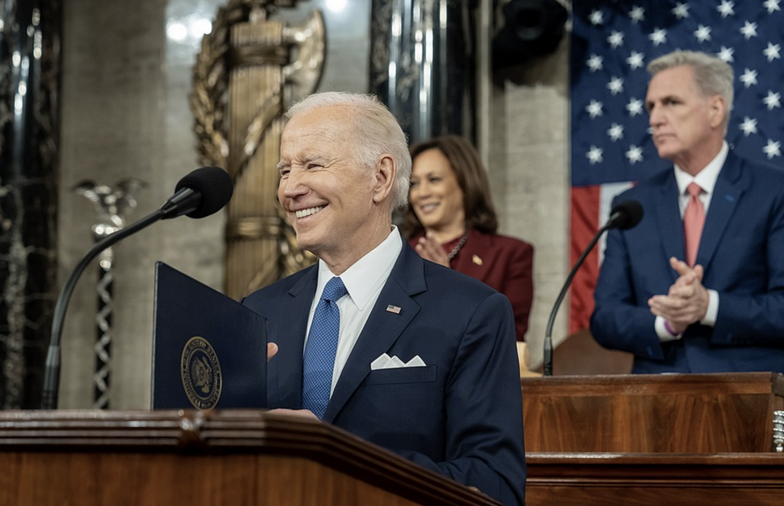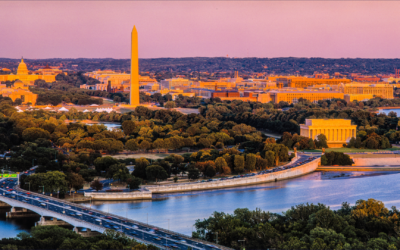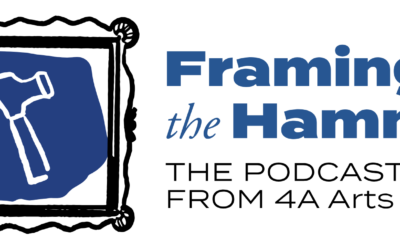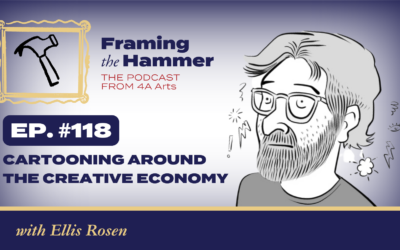“Let’s get the job done,” President Biden stated multiple times in his State of the Union speech. He highlighted a litany of challenges, from job creation to healthy competition with China, from climate change to police reform, all of which are indeed pressing issues facing America today. But what was missing? Absent from Biden’s remarks was any reference at all to the industry that could help tackle most of the problems he listed: arts and culture. Investment in the arts could curb inflation, create more sustainable communities (both rural and urban), and improve American global soft power to compete with the threat from China.
Art is not a popular political platform in 2023, I’m well aware. Imagine if President Biden had introduced a platform of “elevating arts and culture”? The heckling would have surpassed even Tuesday night’s reality. Politicians scream past each other and into the 24-hour news cycle about inflation, police reform, FBI raids, abortion, climate change, and immigration. What we could be doing, however, is harnessing the creative economy (a term we use to incorporate not only arts and culture, but also the adjacent industries reliant upon arts and culture) to create jobs and tackle the problems outlined in the State of the Union. With this strategy, proposed solutions could be sped up, finely-tuned, and hyper-focused with the creative industry as a solution-based partner.
There are more than 4.6 million creative industry workers in our country (an economic force equivalent to the airline industry) and the sector contributes $877 billion to the GDP, which is more than transportation, utilities, or education – in fact, more than agriculture and mining combined. It comprises a demographic that includes painters and poets, but also construction workers, fashion designers, consultants, and mental health care workers. Arts and culture is an ecosystem that, when appropriately leveraged, brings innovative problem-solving skills to all industries.
Our cultural ecosystem is responsible for far more than providing just entertainment, enrichment, and pleasure in our lives. Arts and culture are also an overlooked economic engine for small towns, suburbs, and big cities alike.
Though few studies exist to prove it as yet (something 4A Arts plans to change,) it’s clear that investing in arts and culture results in huge returns. One study in Chicago found that in “the Loop” neighborhood, for every dollar spent on a theater or concert ticket, $12 of revenue was generated for the Loop economy at large. In the United Kingdom, it was found that for every £1 of taxpayer money that funded its national Arts Council, the Council returned £5; in 2013, that amounted to an added £2.35 billion in the UK national treasury.
And as for Biden’s main talking points? Can investment in arts and culture really help ease skyrocketing inflation, improve a crumbling infrastructure, or the loss of jobs overseas?
Without a doubt.
Today’s inflation rate is a new phenomenon, distinct from the supply issues or rising manufacturing costs of the past. Instead, it’s overwhelmingly caused by the concentration of American industry into a few major players, who are raking in record profits despite consumers struggling to make ends meet.
A robust investment into small businesses in the creative economy could create new innovators in nearly every field, offering Americans more options and forcing large corporations to lower costs in order to compete. Arts and culture businesses are highly likely to be rated as “substantive innovators”; artists are 3.6 times more likely than average to be self-employed; and the characteristics that define arts workers – creativity, innovation, and curiosity – “are vital for starting a new [entrepreneurial] venture.” And infrastructure and jobs? Consider how Cleveland revitalized its decaying Waterloo Road, or how local sign designers were put to work in Covington, Kentucky, eventually leading to the establishment of six new small businesses downtown. And this isn’t limited to cities and urban areas; rural America stands to gain from cultural investment more than any other area. “You can do all the infrastructure investment but if you aren’t doing cultural investment you will not have a sustainable community,” says Charles Fluharty, CEO of the Rural Policy Research Institute (RUPRI).
Investing in the arts isn’t just a positive boon; there is a steep cost in failing to do so. While America successfully employed soft power in curbing authoritarianism via the post-WWII Marshall Plan and other creative exchange initiatives throughout the Cold War era, the U.S. fell year after year in the Soft Power 30 Report that evaluates 30 countries’ ability to use “positive attraction and persuasion to achieve foreign policy objectives” rather than relying on military might and economic incentives. The growing threat of China’s influence makes it essential that America regain that lost ground. Financially supporting the creativity and self-expression that inspires people around the world and supports freer democracy could help us combat the progress made by China under Xi Jinping, who has vastly outpaced American investment in soft power to “deepen cooperation in education, science, culture, sports, tourism, health, and archaeology.”
But the benefits don’t stop there. We could help slow climate change by employing artists to increase awareness and comprehension of the ramifications and potential solutions to a warming earth. We could lower medical bills with art that helps speed recuperation, lower barriers to mental health treatment, and slow cognitive decline. We could address police reform through bridge-building programs bringing together police and neighborhood children in theatrical improvisation activities helping develop empathy, appreciation, active listening, and curiosity skills.
And I can’t possibly list all the resources proving that arts education helps all areas of education. But here’s one reference for starters.
President Biden envisions a blue collar plan to rebuild America – from the bottom up and the middle out. The 4.6 million creative workers in the United States of America stand ready to “get the job done”. For too long, Republicans and Democrats have dismissed the arts and culture sector as a frivolous luxury when in reality, the creative economy creates jobs, lowers crime, increases the return on educational investments, is a vital part of American identity and self-expression, and (lest we forget) brings joy to millions. American artistic expression and creativity should not be relegated to a privilege limited to celebrities, dead painters, and trust funds masquerading as “starving artists.” Rather, creative types in small towns, suburbs, and big cities can help systemic problems challenging our entire populations, regardless of the color of the collar.





